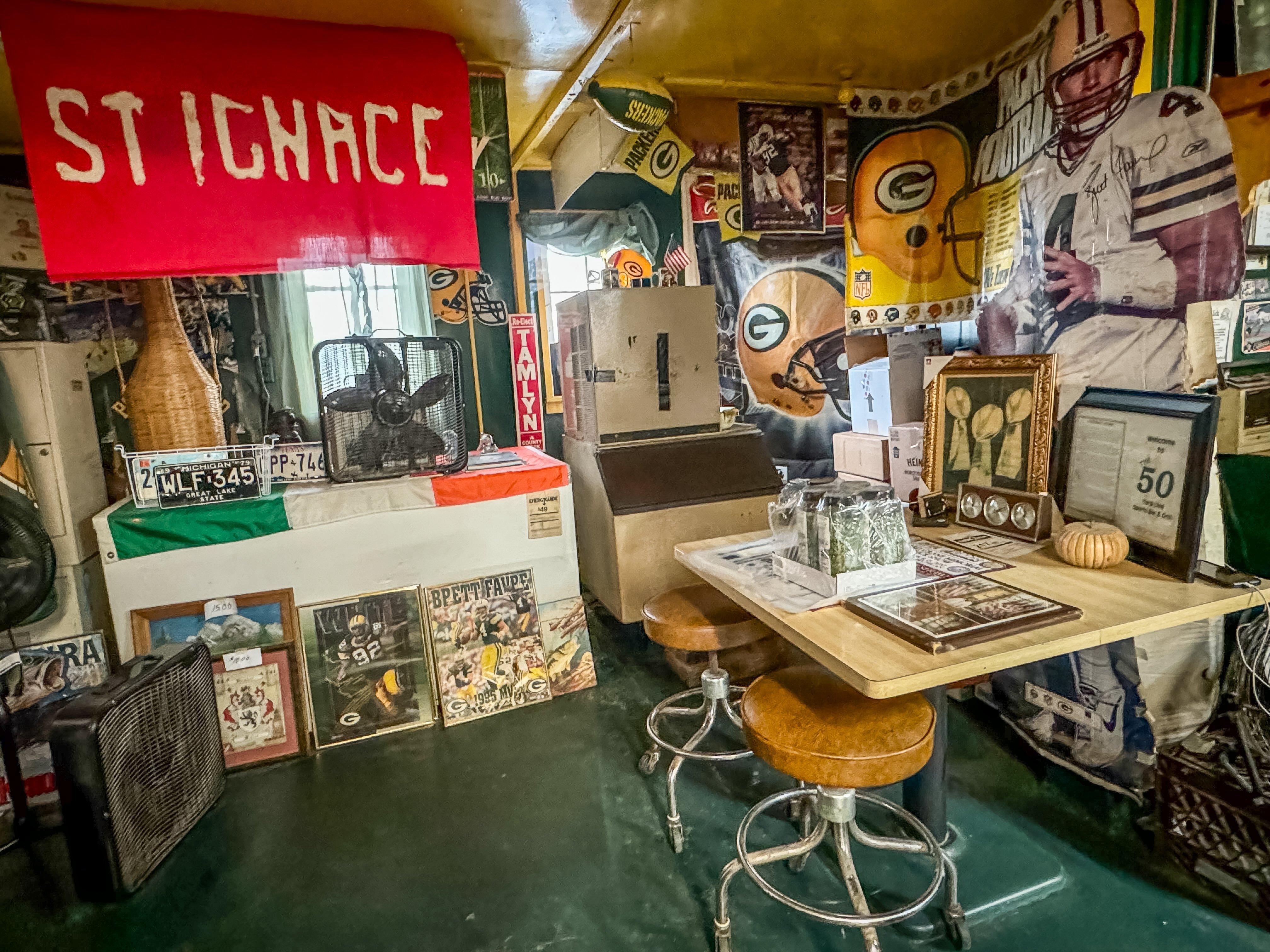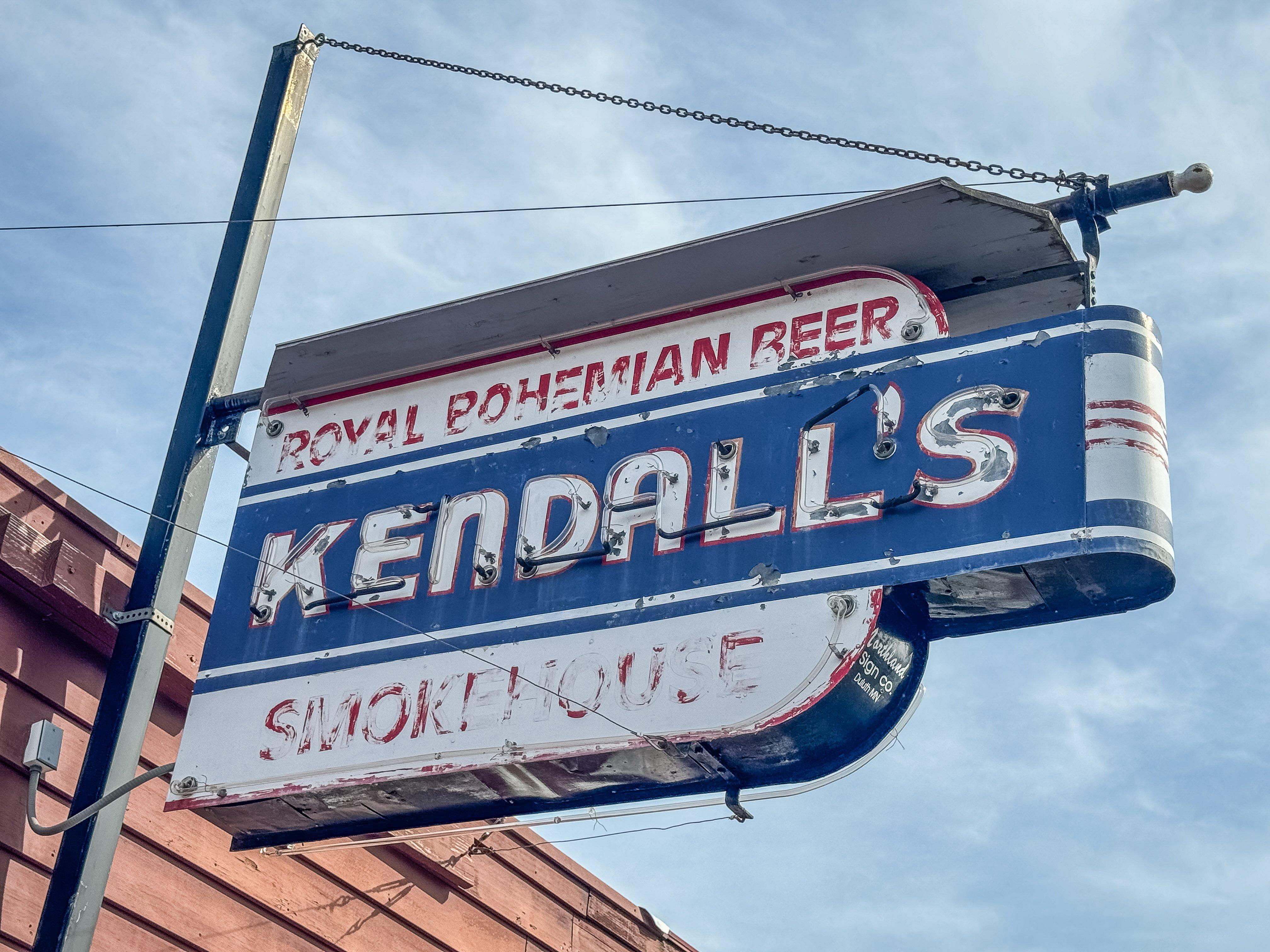Drive through just about any town surrounding one of the big lakes and you will soon run into a store smoking and selling fresh fish, a tradition as old as the people who fish the lakes
Winters are brutal around the Great Lakes. Long-ago inhabitants learned that, in order to have food during the worst of the cold season, they had to take advantage of bountiful warm-season fisheries and somehow preserve their catch. Smoking was one of the most effective methods they found. Bonus: The finished product was delicious.

Smoking has been a favored way to preserve fish since long before the first Europeans set foot on this continent. Image by C Pendley
Fast-forward to the mid-1800s when Europeans began commercially fishing the lakes. Many of these immigrants were from Scandinavian countries, where smoked fish had been a tradition for centuries.
Soon, shops selling smoked fish dotted the landscape. That tradition lives on today. Make a drive around the Upper Peninsula of Michigan or anywhere around Lake Superior and you’ll see at least one smoked fish place in just about every town you pass through.

Take a drive around any of the big lakes and you will likely find a shop selling smoked fish. Image by C Pendley
Today, many of the shops still smoke their own fish on site. Others process their catch in house, then send them to larger smokehouses to finish. As towns have grown around the shops, laws have made it harder to have smokehouses on the premises.

Many of the fish houses process their fresh catch on site before smoking it. Image by C Pendley
The process is a simple one, pretty much unchanged over the past few hundred years. The fish is first brined in saltwater, sometimes by itself but often with sugar or other sweetening agents, along with spices. Recipes vary from shop to shop, and even among fish types in the same shop.
Smoking around here is most often done with seasoned maple. Fresh fish is hung from rods or placed on racks and smoked until done. Lake trout, whitefish, menominee, and sometimes chubs are smoked. Great Lakes salmon are highly regulated, so salmon are often imported to be smoked and sold.

Lake trout are an abundant resource on the Great Lakes and a favorite of area smokehouses. Image by C Pendley
I relish smoked fish. By itself, on a cracker, mixed into fish dip, piled on a sandwich, there is no way I don’t enjoy a good smoked fish. On a recent trip through the UP of Michigan, then along the south shore of Superior through Wisconsin and up the north shore to the Canadian border, my wife and I stopped at several shops, some new to us, some longtime favorites.
Carlson’s Fisheries
In the aptly named “Fishtown” of Leland, Michigan, about 30 miles out of Traverse City, is Carlson’s Fisheries. Directly on the working dock, the market was founded by Nels Carlson, who emigrated to Michigan from Norway. Today, 100 years later, the fifth generation of Carlsons are still processing and selling fresh and smoked fish.

Carlson’s Fisheries has been located in Leland for over 100 years. Image by C Pendley
The Carlsons run two smokehouses. A smaller one sees use for chubs and jerky, the larger for lake trout, whitefish, and custom orders of smoked salmon done for fishermen who had some luck out on the lake.

Today, the fifth generation of Carlsons is keeping the tradition alive. Image by C Pendley
Besides traditional smoked whole fish and fillets, Carlson's is known for the original Smoked Whitefish Påté, made daily. A blend of cream cheese, spices, and fish, this spread is popular to serve as an appetizer with crackers. Carlson’s also makes an excellent smoked whitefish sausage.

Try the smoked fish sausage at Carlson’s. Image by C Pendley
Manley’s Famous Smoked Fish
Located just over the Mackinac Bridge in St. Ignace, Michigan, Manley’s has been in business for 72 years. They sell lake trout, whitefish, menominee, herring, salmon, and fish dip, along with jerky and some excellent meat sticks.

Manley’s has been in business for over 72 years. Image by C Pendley
Owner Don Wright says they smoke over maple wood as needed, daily during the busy season. Manley’s lake trout is mild, not overly sweet or salty, and made a perfect road lunch with a sleeve of crackers.

The eclectic decor of Manley’s puts one in mind of an old Northwoods hunting camp. Image by C Pendley
Hoop’s Fish Market
With two locations in the quaint lakeshore town of Bayfield, Wisconsin, Hoop’s started as Bay Fisheries in the 1950s and was purchased by current owner Craig Hoopman in 2017. The dockside location features a restaurant as well as a fish market, and the second store, a few blocks off the water, sells fresh and smoked fish along with other local products.

There has been a fish market at this location for at least 75 years. Image by C Pendley
Besides the standard fresh and smoked whitefish, lake trout, herring, and imported salmon, Hoop’s is known for fresh whitefish livers, a much sought after delicacy.

Hoop’s specializes in fresh-caught Lake Superior fish like this whitefish. Image by C Pendley
Fish is processed straight off the boat, then sent to a nearby smokehouse for finishing over maple. Hoop’s whitefish is excellent, and even my wife, who doesn’t share my affinity for smoked fish, enjoyed it as we drove along the lakeshore.
Russ Kendall’s Smokehouse
Along the north shore of Lake Superior in Knife River, just north of Duluth, you find the world-famous Russ Kendall’s Smokehouse. Founded in 1908, they smoke trout, whitefish, Cisco, herring, salmon, and sometimes walleye daily during the busy season. The smokehouse is on site and burns maple to produce the smoke. I’ve used their smoked walleye to make an outstanding breakfast omelet.

Founded in 1908, Russ Kendall’s is one of the oldest smokehouses still in operation. Image by C Pendley
Besides smoked fish, you can find many local cheeses, wild rice, fish dips and spreads and other delicacies at Russ Kendall’s, both fresh and frozen. Today, the fourth generation of the family works at the smokehouse, keeping the traditional smoking methods and recipes alive. Russ Kendall’s will even ship products during the cold-weather months of November through March.

The fourth generation of the family helps keep the Kendall tradition alive. Image by C Pendley
Lou’s Fish House
Located in Two Harbors, Minnesota, Lou’s Fish House was begun in 1975 by Lou Sjoberg—the passion project of a former wrestler and welder turned fish smoker. His unique smoked fish quickly became a local legend, drawing visitors from all around.

Besides the standard smoked fish species, Lou’s smoked jumbo shrimp is a must-try. Image by C Pendley
Over the years, Lou’s became a must-stop for area visitors seeking quality smoked fish before it closed after Lou retired. Fast-forward to 2018, when Lou’s was revived and reopened by Ashleigh Swanson and her family.
Today, Lou’s sells the standard smoked fish like salmon, lake trout, and herring, but also offers up some unusual products like jumbo smoked shrimp (I wasn’t prepared to enjoy these as much as I did, and you’ll probably see a smoked shrimp recipe in the near future on Timber-2-Table as I try to re-create the delicacy).
Lou’s also sells beef jerky, local cheeses, and other products, as well as ice cream. This historic fish house is clearly in good hands and continues to be a destination for both locals and area visitors.
The Fisherman’s Daughter
All the way up in Grand Marais, Minnesota, less than an hour from the Canadian border, is one of our favorite places to pick up smoked fish. The Fisherman’s Daughter is in a building that has been around for decades, always centered around commercial fishing, either as a processing and production facility, a market, or a restaurant.

This site on the shores of Superior has been a processing plant, a fish market, and a restaurant. Today it is all three. Image by C Pendley
Today, it’s a combination of all three. Fish are brought in straight from the boats to a basement processing facility where they are broken down to be sold in the fresh market, shipped out to various wholesale customers, or taken off site to a nearby smokehouse. The day we were there, new nets had just been offloaded outside the back door and were about to be loaded onto the fishing boat. There were buckets of what remained of lake trout and other fish that had just been processed. The fish had been offloaded just hours before. You don’t get much fresher than that.
Besides smoked fish including herring, lake trout, whitefish, Atlantic salmon, steelhead, and brown sugar trout, the Fisherman’s Daughter is also known for sweet and smoky salmon candy. These delicious bits of smoked salmon sell out quickly, so grab some if you happen to be there while it’s in the case. There’s a working restaurant in the same building whose lightly breaded fish and chips can’t be beat. You can also find local cheeses and other products to fill out a perfect lakeside lunch.

Commercial watermen still stack their nets outside the back door of the Fisherman’s Daughter. Image by C Pendley
These are just a fraction of the smoked fish markets to be found along the Great Lakes. Just about any town will have at least one. Chances are that it has been there for years. And that it produces classic smoked fish and maybe something different as well. The only way to find out is to explore the area for yourself. Don’t let a dingy or run-down exterior or a tiny shack turn you off. Those are often some of the best spots. Don’t just buy your fish and leave. If it isn’t busy with customers, talk to the folks behind the counter. Ask them about their recipes and their favorites. The stories they tell will be worth it.












